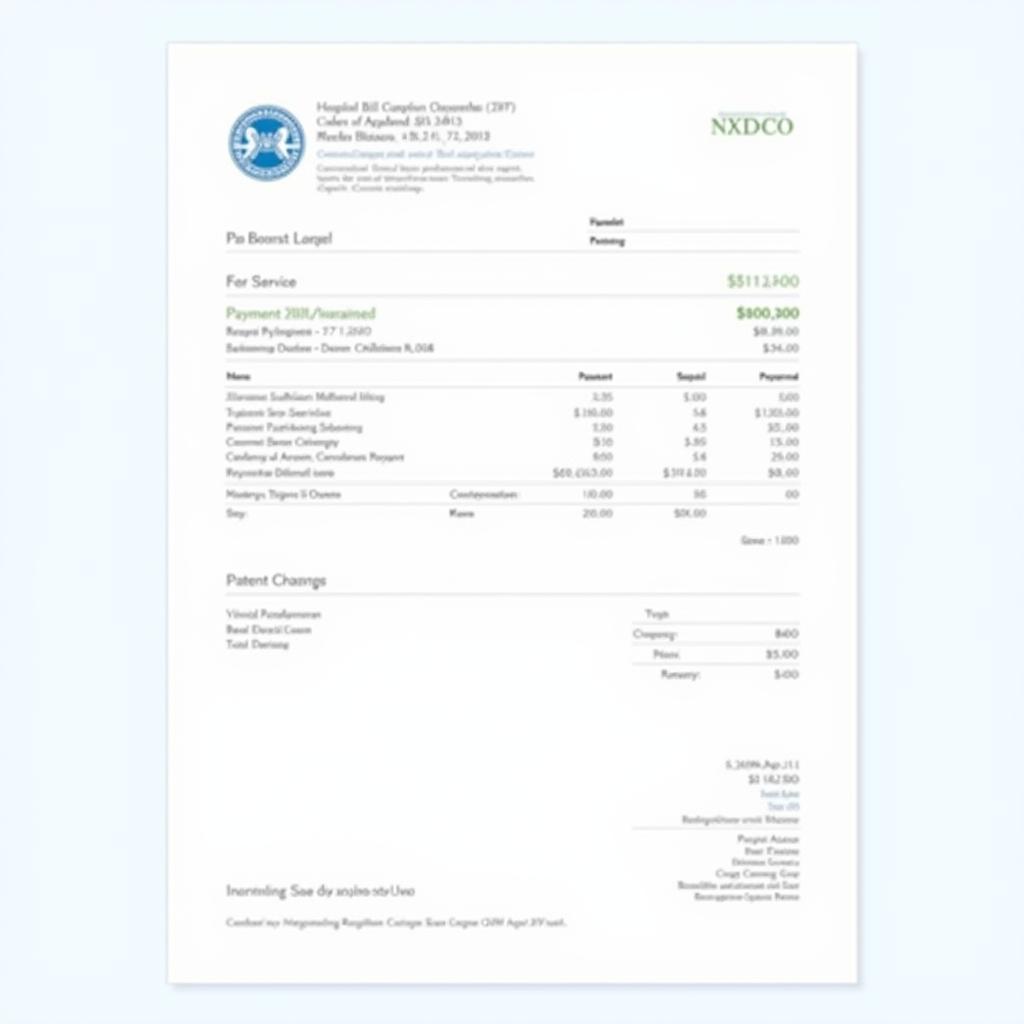When you’re facing a medical situation, the last thing you want to worry about is deciphering a complicated hospital bill. Understanding your Hospital Bill Paid Receipt is crucial for managing your finances and ensuring you’re not overcharged for medical services. This comprehensive guide will walk you through everything you need to know about hospital bill paid receipts, empowering you to navigate your medical expenses with confidence.
Deciphering Your Hospital Bill Paid Receipt
A hospital bill paid receipt serves as proof of payment for services rendered by the hospital. It includes detailed information about the treatments and procedures you received, the associated costs, and any payments made by you or your insurance provider.
 Example of a Hospital Bill Paid Receipt
Example of a Hospital Bill Paid Receipt
Key Components of a Hospital Bill Paid Receipt
To fully grasp the information presented on your receipt, it’s essential to familiarize yourself with the key components:
1. Patient Information: This section identifies you as the patient and includes your name, address, date of birth, and insurance information.
2. Account Number: Each hospital visit is assigned a unique account number that helps track your medical records and billing information.
3. Date of Service: This indicates the specific date(s) when you received medical services at the hospital.
4. Itemized Charges: This is a detailed breakdown of all charges incurred during your hospital stay or visit. It typically includes:
- Room and board: Charges for your hospital room, meals, and basic nursing care.
- Medical procedures: Costs associated with specific treatments, surgeries, or therapies.
- Medications: Expenses for drugs administered or prescribed during your stay.
- Laboratory tests: Fees for blood work, urine analysis, imaging scans, and other diagnostic tests.
5. Total Charges: This represents the sum of all itemized charges before any adjustments or payments.
6. Insurance Payments and Adjustments: If you have health insurance, this section will outline the amount paid by your insurance company and any adjustments made to the bill based on your coverage.
7. Patient Responsibility: This is the amount you are responsible for paying after insurance has been factored in.
8. Payment Method: Your receipt will indicate how the bill was settled, such as cash, credit card, or insurance payment.
9. Balance Due: If there is any remaining amount owed after insurance and payments, it will be reflected here.
Common Questions About Hospital Bill Paid Receipts
1. What if I find an error on my hospital bill paid receipt?
“It’s crucial to thoroughly review your hospital bill for any discrepancies. If you identify an error, don’t hesitate to contact the hospital’s billing department immediately,” advises Sarah Thompson, a certified medical billing advocate.
2. How long should I keep my hospital bill paid receipts?
It’s generally recommended to keep medical records, including paid receipts, for at least seven years.
3. Can I get a copy of my hospital bill paid receipt if I lose it?
Yes, you can typically request a copy of your receipt from the hospital’s billing or medical records department.
Tips for Managing Your Medical Expenses
- Review your hospital bill carefully. Familiarize yourself with the charges and don’t hesitate to ask for clarification on any unfamiliar items.
- Negotiate payment plans if needed. Many hospitals offer payment plans to help patients manage their financial obligations.
- Keep detailed records of all medical expenses. This will prove helpful for insurance claims and tax purposes.
By understanding the intricacies of hospital bill paid receipts and adopting proactive financial management strategies, you can ensure you’re well-equipped to handle your medical expenses effectively.
Remember, knowledge is power when it comes to navigating the complexities of healthcare costs.